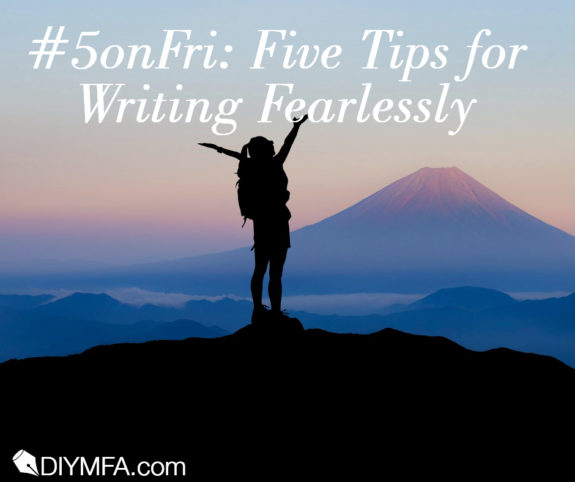Fearless writing is impactful. It forces the audience to encounter characters, situations, or outcomes that they may not be entirely comfortable with—and that’s a wonderful thing. It sounds easy enough to write fearlessly, and indeed it is—right up until someone starts reading your work. I never considered what my grandmother might think about my gruesome little story until I encountered her desire to read it. As a result, when I was writing the sequel to my novel, The Poet, thoughts started creeping into my mind about who exactly would be looking at my book and more importantly, who was I going to offend? I found this limiting me as an author and I suspect you have encountered the same.
Here are five tips that I have used that help to keep me on track and keep me writing unafraid.
1) Don’t write for an audience
We all want an audience. We don’t write books to secretly hope they will not be read—but in order to write fearlessly you may have to anger your audience from time to time. Ever kill off a main character or have a well-loved character do something unforgivable? Well, if it works for your tale go for it. It may hurt a little, but it might be just what your story needs.
2) Forget who’s reading it
I know this is extremely difficult to do! Our goal as authors is to tell a story, and to do that we have to hope people WILL read whatever we’ve written, but the truth is that authors are sensitive people. There are times we will pour our darkest, deepest thoughts onto a blank page. Things we would NEVER say out loud in certain company. In order to make certain you do not accidentally censor yourself, you have to forget about who’s reading it.
3) Be uncomfortable
It’s true, writing can hurt. It can make us cry or gasp as if the words did not just flow from our fingers onto the page in front of us. Sometimes the story can take on a life of its own. I encourage you to allow this to happen. It is entirely possible the ending you have in mind is NOT the one that you will wind up writing—and that’s OK! Try and become comfortable with being uncomfortable.
4) Think like your characters
We deliberately place our beloved heroes (or anti-heroes) in certain situations or emotional states as part of the tale we weave. Often, I find myself in the middle of a fictional conversation and I have an idea of how I’d like my character to respond. As I start to type I realize: yes, that is a likely response, but what would my character really say? Letting the characters speak for themselves is typically better than my original plan.
5) Remember why you started writing in the first place
Something pulled us here to explore the land of rejection letters and occasionally icky reviews. What was it? There is something intangible about the desire to write that is closer to need than desire. At some point in your life, you decided, “I’m going to write a book.” Kudos! It is quite the undertaking. Never forget your reasons for embarking on this journey in the first place. Embrace those motives. Keep them clearly in your mind.
You have a story to tell. Never forget that! It will keep your writing as fearless as it was in Chapter One.

Stephanie Jo Harris is the author of psychological thrillers, and she has a special affection for all things disturbing and uncomfortable. A life-long Midwesterner and a licensed counselor, she spends her free time writing, daydreaming and pursuing atypical conversation.







